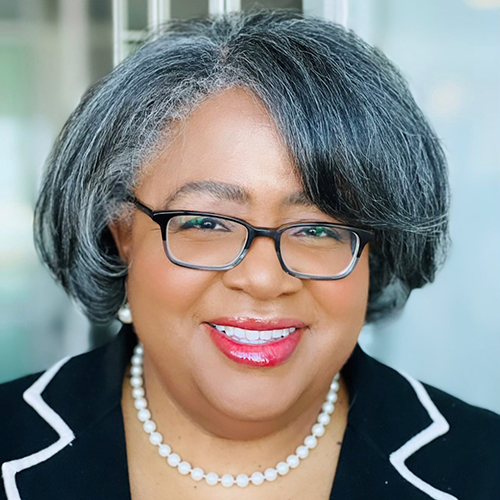Statement of Jocelyn Frye, President of the National Partnership for Women & Families WASHINGTON, D.C. – April 23, 2024 – Today, the Biden administration published a final rule to support higher pay and better work-family balance for workers by...

What Does the Jobs Report – and My Grandmother’s Cookbook – Tell Us About the Care Economy? | #JobsDay April 2024
For Care Workers Recognition Month, we look at how caregiving jobs are faring in today’s economy – and why care work is personal for so many people.

Bridging the Divide: How Businesses are Investing in Equal Pay and Gender Equity
Businesses play a key role in reducing the gender wage gap.

113 Years Later, We Remember the Triangle Shirtwaist Factory Fire
Today, we remember one of the deadliest industrial disasters in U.S. history – the Triangle Shirtwaist Factory fire of 1911. Over 100 workers, mostly young, immigrant women and girls, died.

We analyzed 46 years of consumer sentiment data – and found that today’s ‘vibecession’ is just men starting to feel as bad about the economy as women historically have
Of the numerous economic trends filling column inches over the last few years, few have gained as much traction as the “vibecession.” But whose feelings have been driving the vibecession in the first place? In a word, men’s.

Setting the Record Straight: The Truth About the Wage Gap
In 2019, a poll revealed that nearly half of men believe that the wage gap is “made up.” It’s time to set the record straight.

Black women and Latinas are joining the job market – but are they finding the jobs they’re searching for? | #JobsDay March 2024
For Women’s History Month, we celebrate the progress we have made while acknowledging the persistent inequities that remain in our labor market.

Disabled employment is at a record high, but disparities remain
Today, the Bureau of Labor Statistics released its annual data about disabled people in the U.S. workforce. The data reveal a continued upward trend in disabled employment. However, inequities remain for disabled people, particularly disabled women and disabled people of color.

“The Math Ain’t Mathing”: Black Women in Hollywood and the Wage Gap
In light of Taraji P. Henson’s recent interview with Gayle King, this piece discusses how Hollywood continues to undervalue and under pay Black Women actors.

Black women still face inequities in today’s strong labor market | #JobsDay February 2024
January’s jobs report shows another strong job month for the economy, but persistent inequities underscore the need to center Black women in our economic policymaking.

Fifteen Years After Ledbetter, Here’s Why We Need to Pass the Paycheck Fairness Act
The Lilly Ledbetter Fair Pay Act was an important step towards closing the wage gap. Since 2009, the wage gap has shrunk by 7 cents. Despite the progress made, there is far more work to be done to eliminate the wage gap that robs the United States’ economy of over 1 trillion dollars a year.

Did the economy deliver for women in 2023? Will it in 2024? | #JobsDay January 2024
The economy ended 2023 strong, but women of color are not getting their fair share.

In the Year of the Union, Black women and Latinas lead union growth in 2023
Latinas see the largest increase in union membership rates among women despite little change in overall share of union membership.

The Economy Holds Steady in November as the Child Care Sector Continues to Struggle | #JobsDay December 2023
The November Jobs Report shows a steady economy heading into 2024, though the child care sector continues to lag behind overall job growth.

How the Wage Gap Persists Beyond Working Years, Especially for Black and Latina Women
Many don’t realize the gender wage gap continues to impact women beyond working years. With longer life expectancies than men, the gender wage gap quickly turns into a retirement income gap, meaning women have fewer resources to stretch over longer periods when they may be unable to work or more vulnerable to health complications.

Warning Signs in the Latest Jobs Report – and a Chance for Congress to Save Child Care | #JobsDay November 2023
The October Jobs Report data offer some clear warning signs about the state of the country’s economy – and underscore the need for Congress to act to save child care.

Latinas/xs Need Abortion Justice and Economic Justice
Given the increased economic resources required to access abortions in many communities post-Dobbs, Latinas in these 26 states who face large wage gaps are particularly likely to be harmed.

Black women’s labor force participation continues to decline| #JobsDay October 2023
Black women’s and men’s labor force participation continues to decline since the spring, while the rates for men and women overall are steady or higher.

Disabled women face unique barriers at work. Our systems transformation guide seeks to address them.
To the extent a disabled woman can work and chooses to work, barriers to employment and work are some of the many deliberate policy choices that prevent disabled women from achieving economic security.

At the March on Washington, Black women were sidelined. 60 years later, the need to center Black women is as urgent as ever
As America marks the 60th anniversary of the March on Washington for Jobs and Freedom, one controversy we should not overlook is how Black women leaders — who made vital contributions to the movement as organizers, strategists, and frontline foot soldiers — were relegated to a limited, single speaking segment at the March.

“Hot Strike Summer:” How Increased Union Actions Stand to Benefit Women Workers
Unions play a significant role in helping women, especially women of color, by minimizing the pay gap through strengthening negotiating positions and providing transparent pay scales.

